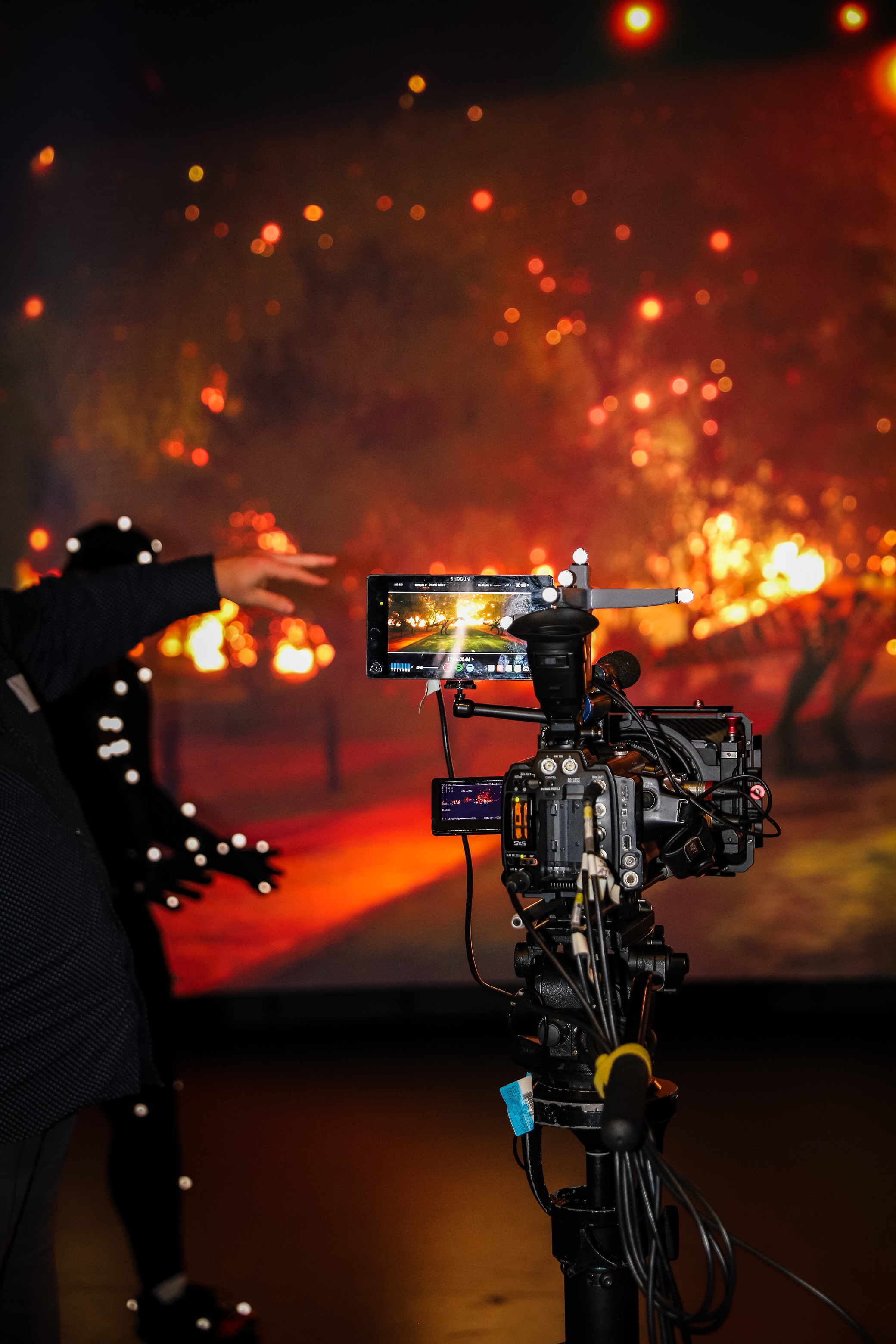State of the art QUT facilities will train students for the future of film making and new immersive media, including the ability to capture impossible shots and bring the past to life, as well as support research projects.
Professor Damian Candusso, Head of School, School of Creative Practice at QUT and with 20 years in the film industry, said the XR Screen Futures Hub would lead the way in skilling up the film industry workers of the future.
He said the space and technology available within the hub would also transform research capabilities across areas including health, sustainability and robotics.
"XR Screen Futures Hub presents new frontiers in film making whereby the impossible becomes possible, especially in areas of depth of field, augmenting virtual and real characters and sets, and the capturing of impossible cinematographic movement," Professor Candusso said.
At the QUT XR Screen Futures showcase last week, Dr Belinda Burns from Screen Queensland stated that there was currently a skills shortage with the Queensland film industry booming, a situation not expected to quiet down any time soon.
"QUT offers something in hot demand by the film industry – more efficient production opportunities using cutting edge visual technology in virtual production, extended reality, and motion capture," Professor Candusso said.
"Film students at the start of the year were able to make a documentary titled 'Wildfire', the story of a veteran firefighter and his experiences during the Peregian Springs bushfires in late 2019.
 "It recreates the scenario in a location that doesn't exist and presents a raging fire that is completely imaginary but with real props and a high-quality interactive digital backdrop which allowed the background to move in a virtual production.
"It recreates the scenario in a location that doesn't exist and presents a raging fire that is completely imaginary but with real props and a high-quality interactive digital backdrop which allowed the background to move in a virtual production.
"We also offer expertise and state-of-the-art facilities for partnerships with industry, government, and research organisations."
Professor Candusso said QUT was already partnered with organisations including Queensland Museum on a digital preservation and presentation of environmentally sensitive artefacts using best-practice photogrammetry and motion tracking.
QUT Lecturer and Digital Initiatives Manager Dr David Pyle leads the joint project with QMA and says the research leads to real life outcomes and helps engage students in science.
"There is rapid adoption of XR by what we call the 'GLAM sector'… Galleries, Libraries, Archives, and Museums, to bring the past to life. QUT has the capacity to assist with this," said Dr Pyle.
"We can animate dinosaurs at Queensland Museum, for example. That level of skill is not just for Hollywood productions and shows how state-based institutions can move with the times and keep their audiences highly engaged.
"The technology available in the XR Screen Futures Hub is also being used to create digital replicas of everything from fossils to coral to antique clothing."
Professor Candusso said XR Futures Screen Hub capabilities were also linking QUT Creative Industries staff and students with health, education, robotics and research in other industries beyond entertainment.
"This is what Studio 110 offers. It's a Black Box style research and development studio with full lighting and digital production capability (180 sq metres, 6 metre ceilings) This space combines robust physical infrastructure (full wall and ceiling grid, suspension and belaying points, rigging, sound and video projection, 180 panel LED wall, 20 camera motion-capture system) with connection to a full digital production network throughout QUT and beyond to the outside world," he said.
"Then there is ScanCave, a full-service optical 3D imaging facility featuring several unique photogrammetry systems. These systems include one of Australia's largest permanent human photogrammetry rigs (80+ cameras)."
Professor Candusso said another current project was a partnership with the Jamieson Trauma Institute and Queensland Health, focusing on advancing trauma care using augmented reality and virtual reality to prepare for and respond to complex scenarios.
"The Hub has world-class expertise in filmmaking, animation, game design, interaction, spatial sound and music technology, holographics, virtual and digital performance and cultural preservations," Professor Candusso said.
"It presents an exciting range of technologies and expertise that can also be applied to creating virtualisations and simulations that benefit numerous industries, including film, television, animation and gaming, galleries, libraries, museums and cultural institutes, education, health, mining and the military."






